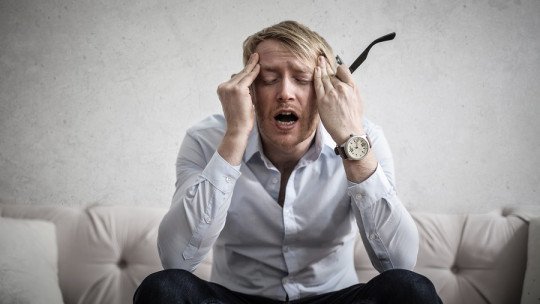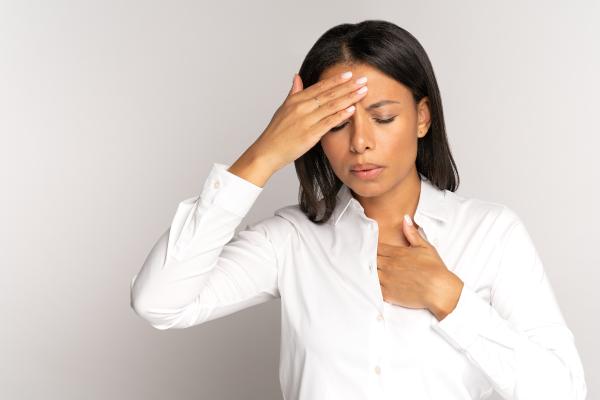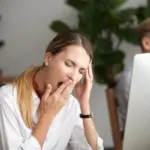
Anxiety can manifest itself in the body in different ways, all of them very unpleasant: sweating in the hands, palpitations, feeling dizzy or tired, among others. One of the most common symptoms of anxiety is the feeling of having difficulties breathing correctly. Feeling that there is a lack of air or that it enters the body incorrectly is a very uncomfortable experience for the person who suffers from it.
What is anxiety dyspnea?
There is a clinical term that covers a wide spectrum of symptoms related to the subjective perception of having difficulty breathing: dyspnea. Although it is important to note that there are many medical causes that could underlie dyspnea and for which it is always important to consult with a doctor – such as asthma, pneumonia or physical deconditioning – there is the possibility that it is a consistent symptom of anxiety. . In this article we will see what it is based on dyspnea due to anxiety and a specific strategy that a person with respiratory difficulties of this type can implement.
The message of anxiety
At first glance, the impulse that a person feels when they perceive that they cannot breathe correctly due to anxiety is that of I want this taken away from me, right now., as if it were a flea clinging tightly to the chest and refusing to let go. It is common for patients or consultants to transfer this request to the psychologist even from the first session, which is completely logical and valid.
Nobody in this world wants to feel bad. But there is a problem: whether we like it or not, in certain specific situations—in difficult conversations, when faced with dilemmas in which we do not know what to do, when faced with losses…—we will end up becoming distressed, angry, sad, and of course, feeling anxious.
We cannot escape the pain, but that sentence is not so bad either. Painful emotions are also useful. Anxiety is an emotion common to all human beings, is normal and adaptive, since it warns us of the existence of a real or hypothetical danger that could cause us harm. We can notice this emotion through certain bodily sensations, such as the sensation of suffocation or obstruction when breathing, which we could group within dyspnea if we wanted to use medical vocabulary. This whole package comes to tell us something: that we are human and that behind that pain there are things that affect us and most likely that also matter to us. Anxiety informs us, it can be a great messenger, as it could signal to us that there are obstacles or threats standing between us and what we want.
The problem is not anxiety or dyspnea, but what we do with them
Each and every one of us feels anxiety. The problem is that, many times, we react immediately to what we feel. without considering what is the best way to respond to a situation, or without considering what behavior would bring us closer to where we want to go. In fact, many of us tend to act with the aim of fleeing from those unpleasant emotions.
Let’s see it with an example. Juan and Martín, Luciano’s two best friends, invite him to the movies that night. Luciano agrees, because how could he say no, if it is the premiere of the latest film in the saga of which the three of them are fans. But Luciano knows that the room will be full, which makes him very anxious. Just imagining sitting for almost two hours in a place with so many people makes it hard to breathe. For this reason, at the last minute, Luciano decides to make an excuse not to go. This relieves him of the feeling in his chest that accompanied him throughout the afternoon. Now Luciano feels good. But after a while, when he sees the photos of his friends who did go to the movies, he thinks about how much he would have liked to see the movie and share that moment with them. In other words, Luciano avoided anxiety by deciding to stay home. In the short term he felt better, but in the long run he paid a price for it.
We repeat, Luciano’s behavior is understandable. Nobody in this world wants to feel bad. Emotions, as well as our thoughts, can give us information about our life stories, who we are, our values, and the world in which we live. The key is that Many times it is our emotions and thoughts that command where we are going in our lives and not us. Continuing with our situation, Luciano could have made the decision, even in the presence of that anxiety, to go to the movies given that there was something valuable in that action (being a present friend, for example). Of course, this hypothetical situation has its limitations – most likely this exposure for Luciano would have required a graduation – but it is enough to illustrate the following idea: fleeing from the physical sensations that accompany our emotions can make them disappear, but only for a brief period of time. time. And, as if that were not enough, in that task we end up distancing ourselves from what is truly valuable to us (in the case of Luciano, his friends).
A concrete strategy for those who suffer from dyspnea due to anxiety
We have the possibility of deciding how we want to act even in the presence of unpleasant emotions such as anxiety. When someone feels like they are having difficulty breathing correctly, they are likely to feel an overwhelming urge to eradicate that physical sensation from their body. However, this is where it could be useful to implement recovery strategies. acceptance towards the emotion and the sensations that accompany it. This involves noticing them, making room for them in our body, allowing them to appear without resisting them or judging them. Mindfulness practices serve this purpose: it is not about eliminating or reducing them, but about being aware of what we feel at that precise moment to decide how to act in accordance with our values and not automatically. In other words, we do not want to eradicate dyspnea or alleviate anxiety, but rather accept them so that we can take valuable actions even in the presence of them. Below, we leave a series of instructions that can serve to bring attention to anxiety instead of avoiding it:
Sit in an upright but comfortable position on your sit bones. You can close your eyes if you wish. Feel how the air enters and leaves your body. Choose the place where you feel the breath the most: the nostrils, the chest, the abdomen. It is an anchor to the present. You don’t have to like the feeling, don’t judge it, just let it happen as it is happening.
Is there a place in your body where you feel that difficult emotion? Does that emotion have a form? Which? Weight? Do you have a temperature? Color? Try to bring your breath to that place. How do you feel? Has something changed or not? Is there something this emotion wants to tell me? Is it worth acting based on that message, or not? What should I do?
Practicing this exercise can help you train yourself to accept the physical sensations of anxiety. Practicing regularly is essential to maintain an open attitude towards emotions. In any case, if practicing this and other exercises is very difficult or the dyspnea is very disabling, consulting with a therapist can be of great help to move forward.








